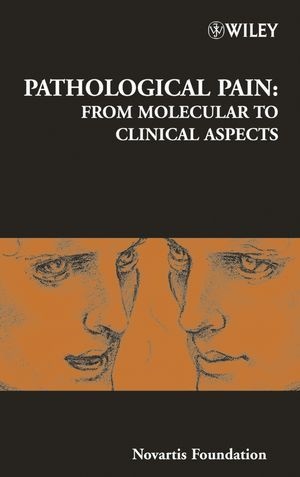Ulteriori informazioni
Informationen zum Autor Derek J. Chadwick and Jamie A. Goode are editors for Pathological Pain: From Molecular to Clinical Aspects and other scientific titles. Klappentext Recent decades have seen an explosion of research into the mechanisms of pain in both normal and pathological states. Neurobiological studies have revealed the detailed characteristics of nociceptive systems and endogenous analgesic systems. Such studies are, however, of only limited use in explaining the mechanisms implicated in pathological pain. Plastic changes in pain systems occur in chronic neuropathic pain, even resulting in structural changes within the CNS, and neuronal plasticity seems to be the key to a better understanding of pathological pain, perhaps reflecting the primitive and poorly differentiated nature of the pain system.In evolutionary terms, the pain system emerged at a very early stage of neuronal development. These early origins are reflected by its plasticity, its intimate relationship with instinctive and other fundamental bodily functions such as the autonomic nervous system, and the involvement of humoral signalling messengers.Recent progress in pain research has shed light on some of the molecules involved in humoral messenger systems, including cytokines, neurotrophins, neuropeptides, inflammatory mediators and ion channels. Precise electrophysiological investigations combined with a detailed molecular understanding are providing important clues about the mechanisms involved in pathological pain. This work is aided by studies of the cellular mechanisms involved in the development of opioid tolerance. In addition, non-invasive brain imaging technologies continue to shed light on pain mechanisms at a cognitive level.This book brings together contributions from key investigators in the area of pathological pain. It covers the receptors and channels involved in nociception, the possible messages that cause neuropathic plasticity, spinal plasticity in neuropathy, plastic changes in opioid systems in neuropathy and opioid tolerance, and plastic changes related to pathological pain. It should be essential reading for pain researchers and clinicians involved in the treatment of chronic or pathological pain.Related books260 Osteoarthritic joint pain Zusammenfassung This book brings together contributions from key investigators in the area of pathological pain. It covers the molecular basis of receptors and channels involved in nociception, the possible messages that cause neuropathic plasticity, spinal plasticity in neuropathy, plastic changes in opioid systems in neuropathy and opioid tolerance, and plastic changes related to pathological pain. Inhaltsverzeichnis Chair's Introduction (Takao Kumazawa). Regulation Mechanisms of Vanilloid Receptors (Makoto Tominagaet, et al .). Sodium channels and neuropathic pain (Jin Mo Chung and Kyungsoon Chung). Ion channel activities implicated in pathological pain (John N. Wood, et al .). General Discussion I. Chronic pain and microglia: the role of ATP (Kazuhide Inoue, et al .). Neurotrophic influences on neuropathic pain (Stephen B. McMahon and William B. J. Cafferty). Changes in DRG neurons and spinal excitability in neuropathy (Koichi Noguchi, et al .). Functional reorganization of the spinal pain pathways in developmental and pathological conditions (M. Yoshimura, et al .). Central plasticity in pathological pain (Min Zhuo). General Discussion II. Anti-opioid systems in morphine tolerance and addiction: locus-specific involvement of nociceptin and NMDA receptor (Hiroshi Ueda). Chronic morphine-induced plasticity among signalling molecules (Alan R. Gintzler and Sumita Chakrabarti). Opioid tolerance and neuroplasticity (Jianren Mao). General Discussion III. A mechanism-based understanding of bo...

